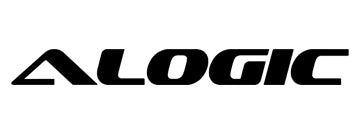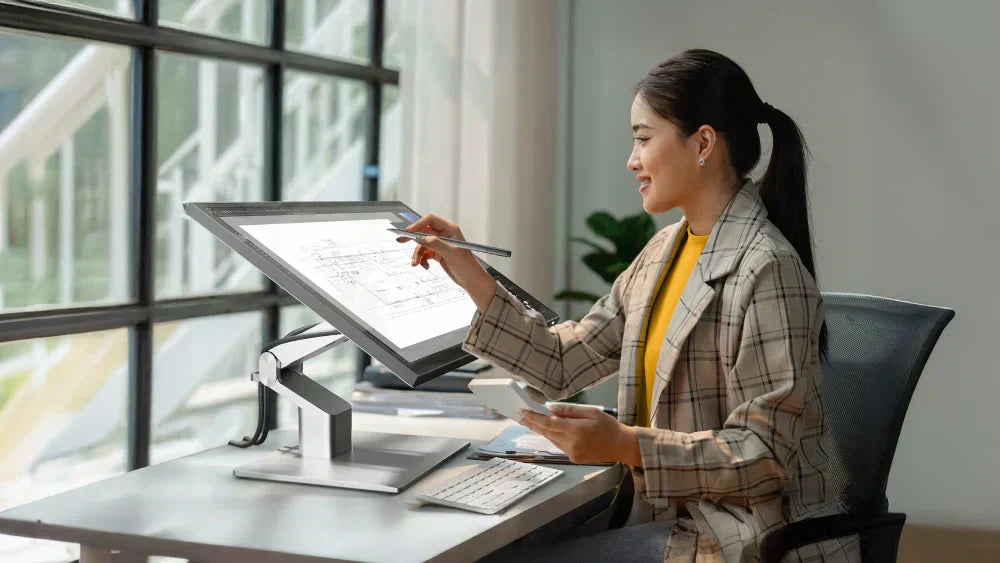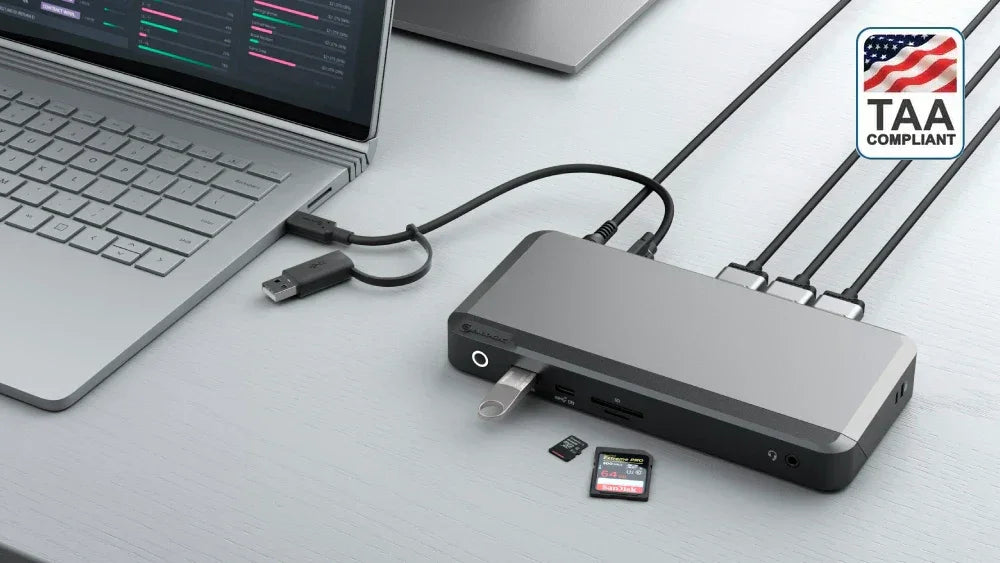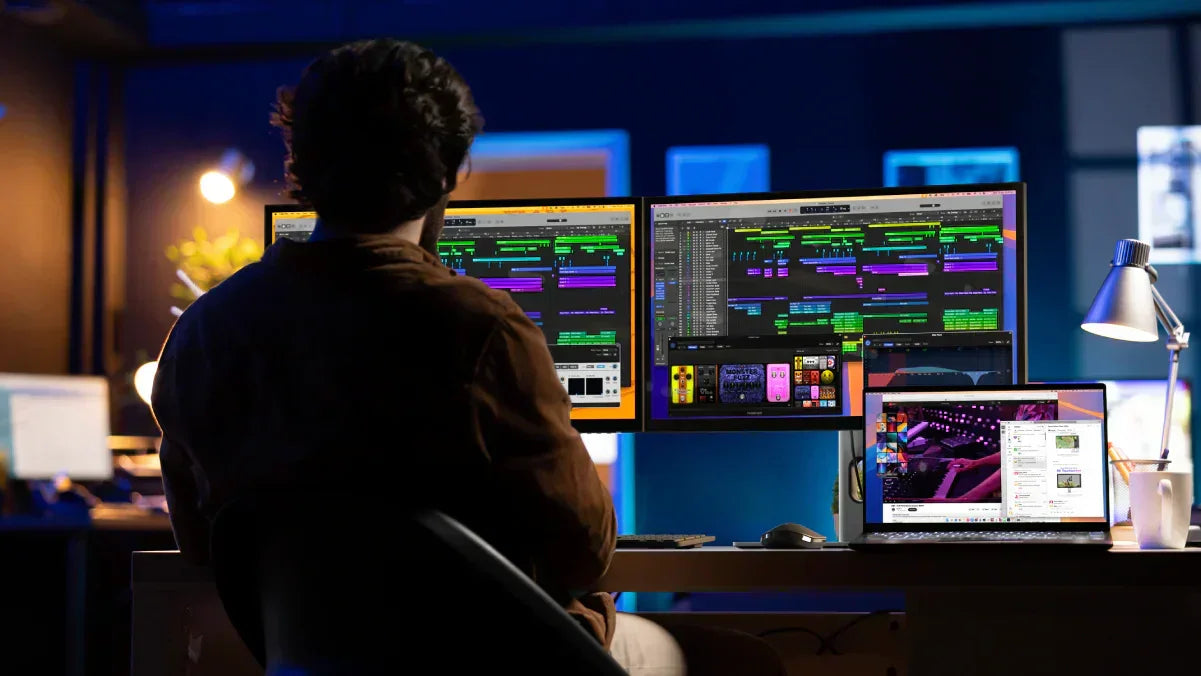Clarity Touch monitors are providing a vital link between new and old ways of working, empowering AEC professionals to digitise their business.
Introduction
Throughout the architectural, engineering and construction industries, professionals are increasingly turning to high resolution touchscreens to support their transition from printed paper plans. This article explores the ways these innovative companies are using Clarity Touch monitors to replace outdated, cumbersome, expensive and error-prone ways of working and gain an advantage in this highly competitive sector.

Background
The architectural, engineering and construction (AEC) industries are in the process of fully digitising the age-old practice of designing and reviewing architectural and engineering plans on paper, keen to realise benefits such as cost reductions, faster rework, robust version control and more seamless collaboration between AEC professionals.
However, replacing physical blueprints and other plan documents with digital equivalents poses several challenges to organisations, requiring investment in technology to ensure the transition doesn’t result in problems ranging from interrupted workflows to process fragmentation, where some elements remain reliant on printed documents, locking in the drawbacks of physical processes despite the capital outlay involved in digitisation.
Architectural and engineering plans are arguably the most critical documents in the AEC industry, which in turn means they’re also some of the most frequently accessed, reviewed, audited and altered. Any move towards digitisation in the industry must integrate technology in a way that is supportive, rather than disruptive, to the time-limited, deadline-constrained professionals who create and approve these plans.
Clarity Touch monitors are increasingly being used by architects, engineers and other AEC professionals throughout the world, valued for their ability to meet the needs of project management, plan reviewers and archivists in accessing, reviewing and collaborating on plans, while providing a robust digital replacement for traditional drafting boards that integrates naturally into the existing workflows of plan creators, helping projects stay on-time and on-budget.

Digital Drawing Board
While ALOGIC’s Clarity Touch touchscreens leverage some of the latest technology to provide fast, accurate multitouch input across Windows and macOS operating environments, the company’s engineering staff quickly realised they needed to take inspiration from much more traditional ways of working to make operating with touch comfortable for extended periods.
This revelation led to the Clarity Fold Stand, inspired by the desktop drawing boards which AEC professionals have relied upon for more than a hundred years. It functions as a hybrid stand – able to raise up and act like a normal computer monitor, or with minimal effort, fold down into an ergonomically angled drawing board.
The robust fold stand, constructed from reinforced steel and lightweight aluminium, allows designers to lean against their Clarity monitor like they would a drawing board, making sketching, drafting or simply navigating a plan far more comfortable for everyday use and avoiding the dreaded “Gorilla Arm Syndrome” working with upright touchscreens can lead to.
Supporting both the 27” Clarity Touch monitors and larger 32” Clarity Max touch, the Clarity Fold stand is a simple substitution for existing desktop drawing boards for organisations digitising the production of architectural plans.

(In marketing images, Clarity Touch is shown with the Fold Stand in an upright position for visual purposes. When in active use, Clarity Touch monitors can be positioned almost flat against the desk.)
High Resolution Display for Detailed Plans
Historically, one of the primary impediments to digitising architectural plans is that while plans could display a lot of information in very fine detail at any one time, computer monitors could not. Even oversized, table-displays were limited by maximum resolutions that resulted in pixel density, usually expressed in “Pixels per Inch (PPI)” well below what the human eye can easily perceive, resulting in the clean or intricate lines of an architectural plan being either interrupted or obscured by large, irregular square pixels.
With ultra-high resolution (UHD) displays, this is thankfully no longer the case. Substantially denser pixel counts allow for fine detail to be rendered with clean, crisp lines, text and icons, facilitating clear and accurate plan reviews.
Although most Clarity monitors share the same 4K UHD resolution, the differing sizes have varying pixel densities which make them ideally suited for different applications.
27” 4K Clarity monitors have a pixel density of 163 PPI, a dramatic increase in visual fidelity over a comparable 2K screen (109 PPI) or Full HD screen (81 PPI) of equivalent size. This makes it substantially more comfortable to work with for long periods of time at a desktop.
27” 5K Clarity monitors have an even higher pixel density of 213 PPI, functionally the same as Apple’s 218 PPI specification for their “Retina Display” monitors, with pixel densities high enough that users should not be able to perceive individual pixels at a glance. This makes 5K Clarity monitors ideal for use in the finest detail work and review processes, where accuracy is paramount.
Finally, the 32” 4K Clarity monitors have a lower pixel density of 137 PPI. This is still fine enough for high resolution work on a desktop, but is crucially easier to share and collaborate with multiple people due to the larger screen, with larger details that can be more easily viewed from a small distance than a denser Clarity 27” monitor.
These larger monitors, ideal for presentation, benefit most from the ability of Code Enforcement Officers and Plan Reviewers a like to quickly and easily navigate plans via intuitive multitouch gestures, such as swiping, dragging, pinching and rotating – the same as they’re familiar with from their phone or tablet and thus sidestepping the need for additional technical training or a specialist guide.

Precision Tools for Precise Work
However, architects and reviewers require higher-precision input methods to take advantage of this increase in visual fidelity. With decades of experience working primarily with traditional, physical plans, transitioning to a primarily moused based input environment poses significant challenges for many AEC specialists, requiring significant periods of retraining and muscle memory adjustment.
Attempts to accommodate traditional, pen-based methods of drafting and markup have run into a variety of technological barriers. Applying a stylus directly to touchscreens has generally failed to directly replicate the experience of drawing on paper, with thick glass disconnecting the stylus’ tip from the image, poor fidelity leading to mistakes, and substantial stylus latency forcing AEC specialists to adjust the speed of their work to accommodate the technology’s limitations.
For this reason, drawing directly onto a touch screen has become less popular among architects, with more and more turning to off-screen drawing pads which offer superior response speed, pressure sensitive input, high fidelity and a more paper-like drawing texture. However, these drawing pads suffer from a major limitation for workers transitioning from traditional methods – the drawing surface and the image are completely disconnected. Learning to sketch while looking away from one’s own hands is a significant challenge for many and a key barrier in the digitalisation of AEC workplaces.
Part of a new technological generation of ultra-high-definition touchscreens, Clarity Touch monitors directly address the key issues with traditional touch displays: visual disconnect, stylus latency, and the precision of input.
One Glass Solution technologies eliminate an entire pane of glass in between the user’s finger, or the tip of their stylus and the image they see, significantly reducing the disconnect between a user’s input and the digital output.
Advances in wireless technology have led to a significant decrease in latency, with the Microsoft Pen Protocol 2.0 utilised by Clarity Active Styluses recording an average latency of 20ms, similar to a wireless video game controller. This makes input feel intuitive, appearing on the screen in almost real time with the user’s stylus, minimising the adjustment necessary for a user moving from working with physical blueprints to digital.
Lastly, Clarity Touch monitors leverage the Microsoft Pen Protocol to deliver more accurate input, when combined with the Clarity Active Stylus. Supporting up to 4096 levels of pressure sensitivity together with 180° of tilt sensitivity, applications including Bluebeam Revu, AutoCAD or Sketchup can tell at all times exactly where the architect’s stylus is and how hard it’s being pressed.
Designed with versatility in mind, Clarity Touch monitors are compatible with any active stylus that supports the Microsoft Pen Protocol 2.0, including both ALOGIC’s Clarity Active Stylus and Microsoft’s Surface Pens, allowing users to choose from a wide variety of ergonomic shapes and with pen nibs of varying size and texture.
These three elements combine to deliver high-fidelity digital input that more seamlessly translates the experience of working with physical plans to a scalable and more efficient digital environment.

Customisable Touch Integrates into Workflows
Another challenge facing AEC workplaces seeking to digitise their workflow is that just about every shop has its own ways of working – ranging from the underlying methods and styles used to create, review and present plans, through to the process and procedure for the creation and storage of documents and designs.
When working with paper plans, the business and its specialists have the power to specify the ways of working most advantageous to them. When moving that work to digital hardware or software platforms, businesses give up a portion of that control and often find themselves needing to force their way of working to conform with the intent of the digital provider, rather than feeling their method has been empowered.
To make adoption as seamless as possible for as wide a range of industries as possibly, Clarity Touch was designed as a workflow agnostic solution that worked with existing tools and processes. With full compatibility for both Mac and Windows operating systems, Clarity Touch monitors can be deployed across an organisation, enhancing workflows throughout the process from conception through sales and ultimately execution.
As OS agnostic devices, Clarity Touch monitors are almost universally compatible with touch-compatible CAD and BIM software on macOS and Windows, including:
- AutoCAD
- Bluebeam
- SketchUp
- Rhino
- Revit
With multitouch and stylus input, the touch functionality offered by Clarity monitors simplifies not only the creation of detailed work, but everyday navigation of their digital world operating system, allowing employees to review and present with the same intuitive multitouch gestures they’re familiar with from their phone or laptop trackpad.
When used with macOS computers, Clarity Touch’s multitouch gestures can even be customised on a per-machine basis to support a particular user’s workflow. A favourite of architects is to create gestures that allow them to continue working for longer periods directly with the stylus, without having to transition back to the mouse and keyboard to accomplish more esoteric functions and interrupting their flow. These can range from double tapping a certain corner of the display through to multi-fingered swipes, and can be shared between users or pre-installed by a technical department, minimising the digital knowledge required by end-users.

A Flexible Platform for Collaboration
One of the greatest benefits of digitising architectural designs is the relatively seamless collaboration it can unlock, ranging from simplified file sharing to real-time editing of a document by multiple parties simultaneously in separate locations, something unthinkable in the era of paper plans.
However, the unlocking of new ways of working doesn’t mean that all of the traditional methods should be cast aside. There are still advantages to in-person meeting, reviewing and collaboration that shouldn’t be replaced entirely with cross-coastal Zooms.
Firms which have digitised their workflows are finding these kinds of traditional collaboration more difficult, with most displays failing to replicate the experience of gathering around a plan on a draft board and making edits together. High resolution touchscreens are generally too small for multiple people to view comfortably, while larger touchscreens are limited by low resolution, requiring users to constantly pan around their designs and failing to deliver a holistic view of the plan.
As the only large scale, high-resolution touchscreens that are compatible with macOS as well as Windows, Clarity Touch monitors bridge this gap, with Clarity 27” models providing a similar viewing area to an ARCH/ANSI C sheet of paper, while 32” Clarity monitors approach the ARCH/ANSI D standard sizes, large enough for two or three people to comfortably view, when combined with the 178° viewing angles offered by Clarity’s IPS screen.
To support collaborative viewing, Clarity Monitors are all compatible with the well-supported FDMI MIS-D 100x100mm VESA mount, allowing the monitors to be secured onto the vast majority of monitor arms, wall mounts, or the Clarity Fold Stand mentioned earlier, which in addition to its ergonomic advantages for long term drawing, features a 360° rotating base to facilitate easy sharing or collaboration. This facilitates more professional collaboration with reviewers or presentation to clients than having to look over each other’s shoulders or pass around an iPad.

One Cable Connectivity Solution
An acknowledged danger of digitising specialist ways of working is that it often requires the layering of multiple hardware and software components on top of each other, generally sourced from different suppliers, which can make resolving the inevitable compatibility issues a complex process for those involved, and an unnecessary imposition onto the already demanding roles of AEC professionals.
Clarity Monitors were designed to simplify hardware connectivity, whether the end user is connecting with a Windows machine or a Mac, with a laptop or a desktop computer. The monitors’ inbuilt USB-C hubs remove the need for an additional docking station on each desk, providing laptop charging and extra USB ports all over the same USB-C cable which is already supplying Clarity video and touch functionality.
The removal of this intermediary layer not only simplifies user provision and makes connectivity simple for the end user to understand but reduces a firm’s risk exposure in terms of hardware providers and potential incompatibilities stemming from the intermediary layer of a hub or docking station. Furthermore, allows for customer presentations to be powered from a single monitor and laptop, minimising setup time.

Conclusion
Although it is fraught with difficult decisions and implementation challenges, the digitisation of the AEC planning processes can deliver fantastic benefits to the businesses who take that leap. Seamless collaboration between offices, streamlined review processes with a variety of specialists and regulating bodies, reduced cost and effort associated with the printing, storage and management of physical plans and perhaps best of all, near-total elimination of the rework associated with the inevitable version control issues physical plans create.
Clarity Touch monitors are quickly establishing themselves as a powerful yet flexible tool for replacing physical plans, offering similar visual fidelity through their ultra-high-resolution displays in sizes comparable with US Standard Architectural and Engineering Drawing Sizes, with precise low-latency stylus input and customisable multitouch gestures compatible with the vast majority of Mac and Windows applications. Their flexible mounting options deliver superior ergonomics traditional computer displays, while facilitating comfortable and professional collaboration with reviewers and customers alike. Finally, their all-in-one approach to desktop connectivity lowers costs and simplifies IT procurement through the elimination of separate docking stations.
Interested in a demo of Clarity’s features and its compatibility with the software your organisation uses? Get in touch with us at sales@alogic.co and we’d be more than happy to explore if Clarity Touch is right for your business.

 New Zealand
New Zealand
 USA
USA Canada
Canada Australia
Australia UK
UK Europe
Europe Japan
Japan Singapore
Singapore UAE
UAE India
India




Leave a comment
This site is protected by hCaptcha and the hCaptcha Privacy Policy and Terms of Service apply.